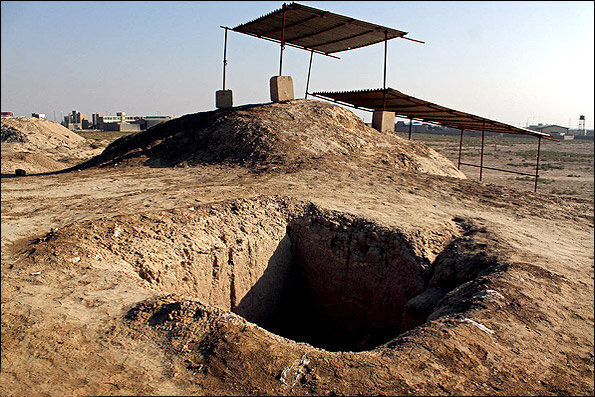INSUBCONTINENT EXCLUSIVE:
TEHRAN - Dehloran, as one of the considerable regions in western Iran, has been settled in ancient times and includes signs of civilization,
stated Habibollah Mahmoudian, a faculty member at Islamic Azad University of Ilam.He told ISNA that Ilams pre-civilization period is called
the Proto-Elamite period, adding that numerous artifacts have actually remained from this era.Excavations conducted in the area reveal that
the humanity lived in [and around] Dehloran 8,000 years earlier and domesticated animals such as sheep and goats.Dehloran was considered
among the cultural and economic centers in this era, which is concurrent with Ali-Kosh period-- famous to pre-pottery era
The ruins of Ali-Kosh hill were occupied by people before the invention of potteries.This era was simultaneous with other ancient regions
such Choghamish, Tal Bakon Fars and Goodin Tepe.Also, areas like Bayat in Dehloran and Meymeh in Zarrinabad were settled by people
throughout that time.Agricultural and animals breeding developmentsMahmoudian described that archeological findings suggest that human
beings achieved to cultivate veggie seeds such as barley, lentils, mung beans, flax and wheat in Dehloran throughout 5,500-7,500 BC
They established the first settlement and domesticated the livestock.These developments have been approved by proof gotten from
archeological excavations conducted by Kent Vaughn Flannery and Frank W
Hull on hills of Ali Kosh, Cheghasefid and other ancient areas in 1961, he said.The people attained to introduce the very first town and
settlement during 5,500-7,500 BC
These villages show important advancements in architecture and social organizations of people of that era.Dehloran, as one key regions in
pre-historic period, has actually played a great function in promoting agriculture, animal husbandry and preliminary architecture.Given the
existence of rich monuments, he stated, the region is a testimony to ancient civilizations and human advancements in ancient times.Earlier
Abdolmalek Shanbehzadeh, provincial tourism chief, said Dehloran plain is among the most considerable locations of the nation where a great
deal of archeological excavations and surveys have been performed so far.However, the start of the Iran-Iraq war (1980-1988) and land
leveling for farming functions over the past twenty years have caused permanent damage to the ancient websites throughout the plain, he
explained.The Dehloran plain is best understood for the excavations conducted at a number of prehistoric sites, which clarified the origins
and development of inactive agricultural villages and towns in the region, and for surveys recording the history of settlement into the
contemporary era.As a reasonably little and remote rural area, it has actually always been affected by political, economic, and
technological developments in the nearby areas of Khuzestan, the Zagros Mountains, and Mesopotamia
Starting as early as the 3rd millennium BC and throughout its subsequent history, it was under the political control of kingdoms in one or
another of these regions according to Iranica Encyclopedia.Although no cuneiform texts have actually been found at any of the Dehloran
sites, the most prominent mound, Tepe Musiyan, is perhaps to be determined as ancient Urua, an Elamite city understood from Mesopotamian
texts.Dehloran has actually been on a trade route connecting the Zagros Mountains with Mesopotamia; in the 1st millennium, the route
connecting the Achaemenid capitals of Susa and Ecbatana went through the region.From the 18th century, Dehloran has been a winter season
resort for the regional tribes.KD
This post first appeared/also appeared in Tehran Times

